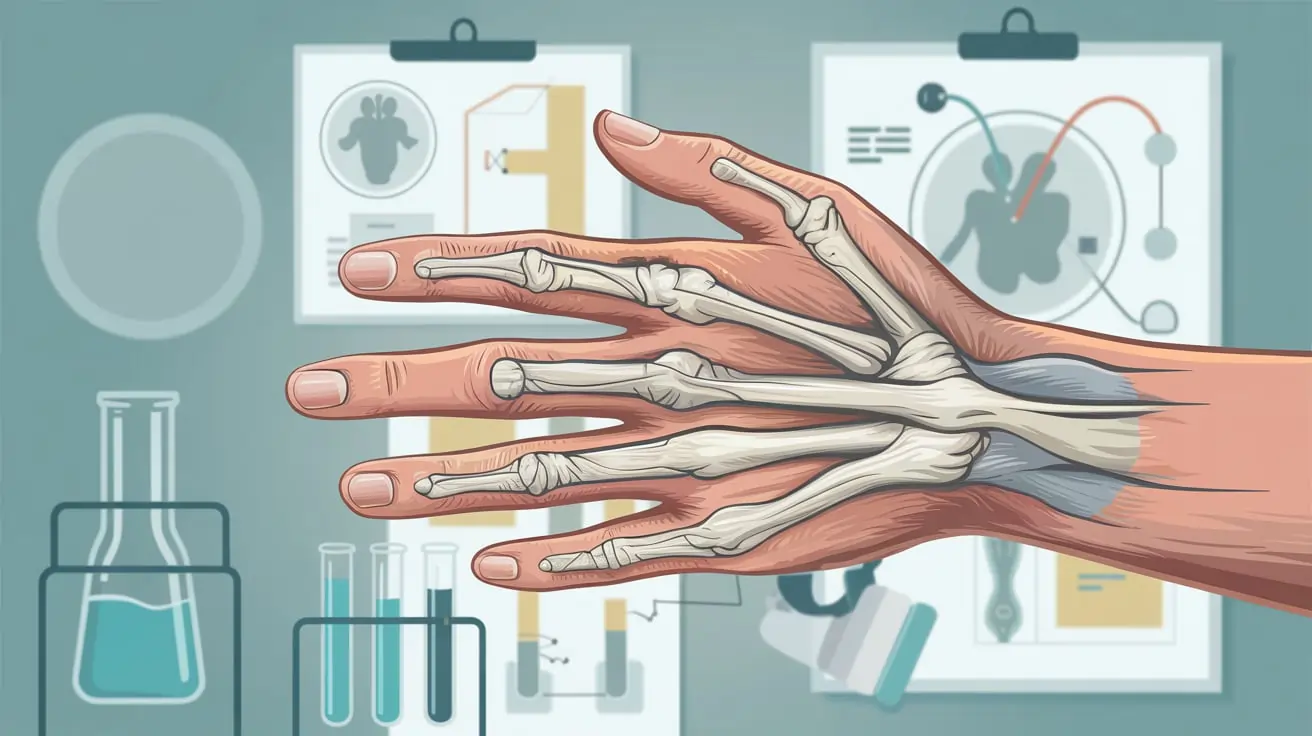Health
Dupuytren Problems: Causes, Symptoms, and Treatment Options

Dupuytren’s contracture is a hand condition where thick, tight tissue forms under the skin of the palm and fingers. This tissue can form hard knots or cords, pulling one or more fingers into a bent position. Over time, the fingers may stay bent toward the palm, making it hard to straighten them. It often affects the ring and pinky fingers.
Signs of Dupuytren’s Contracture
- Small, hard lumps or knots under the skin of the palm.
- Thick cords of tissue that feel like tight bands under the skin.
- Fingers bending toward the palm (usually slowly over years).
- Trouble placing the hand flat on a table or holding objects.
- Stiffness or reduced movement in the fingers.
The condition does not cause pain for most people. But the bent fingers can make daily tasks, like washing hands or wearing gloves, difficult.
Who Gets Dupuytren’s Contracture?
Doctors do not know the exact cause. However, some factors increase the risk:
- Age: Common in people over 50.
- Gender: Men are 4–5 times more likely to get it than women.
- Family History: It often runs in families.
- Ancestry: More frequent in people of Northern European or Scandinavian descent.
- Health Conditions: Linked to diabetes, liver disease, or heavy alcohol use.
- Smoking: May increase risk.
How Doctors Diagnose Dupuytren’s Contracture
A doctor or hand specialist checks the hands for lumps, cords, or finger bending. They may ask you to try flattening your hand on a table. If you cannot straighten your fingers fully, it could signal this condition. Tests like X-rays or scans are rarely needed.
Treatment Options for Dupuytren’s Problems
There is no cure, but treatments help manage symptoms. The best option depends on how severe the condition is:
- Monitoring: If fingers are only slightly bent and not causing problems, doctors may suggest waiting and checking regularly.
- Needle Aponeurotomy: A needle punctures the tight cords to break them, allowing fingers to straighten. Done in a clinic, no stitches needed.
- Enzyme Injections: A medicine (Xiaflex) is injected to soften cords. The doctor then stretches the finger to snap the cord.
- Surgery: For severe bending, a surgeon removes the thickened tissue. Recovery takes weeks, and hand therapy may be needed.
- Radiation Therapy: Low-dose radiation in early stages might slow progression (less common).
After treatment, the problem can return. Regular follow-ups with a doctor are important.
Living With Dupuytren’s Contracture
- Use adaptive tools (wide-grip utensils, jar openers) to make tasks easier.
- Do gentle hand stretches to keep fingers moving.
- Protect hands from injury, which might worsen the condition.
Can You Prevent Dupuytren’s Contracture?
Since the cause is unclear, prevention is hard. However, these steps may help lower risk:
- Avoid heavy alcohol use.
- Manage diabetes with your doctor’s help.
- Quit smoking.
When to See a Doctor
Visit a doctor if:
- You notice lumps or cords in your palm.
- Fingers start to bend and cannot straighten.
- Daily activities become hard due to hand stiffness.
Early treatment can improve hand function and slow the condition.
Common Questions
Is Dupuytren’s contracture the same as arthritis?
No. Arthritis affects joints, while Dupuytren’s affects tissue under the skin.
Can children get Dupuytren’s contracture?
Very rare. Most cases are in older adults.
Will both hands be affected?
Often yes. One hand may be worse than the other.

Say hello to Winston Papyrus, the person who writes the stories on Socialcorner.co.uk. Winston is really good at making stories that help you feel calm, especially if life feels a bit busy and confusing.

